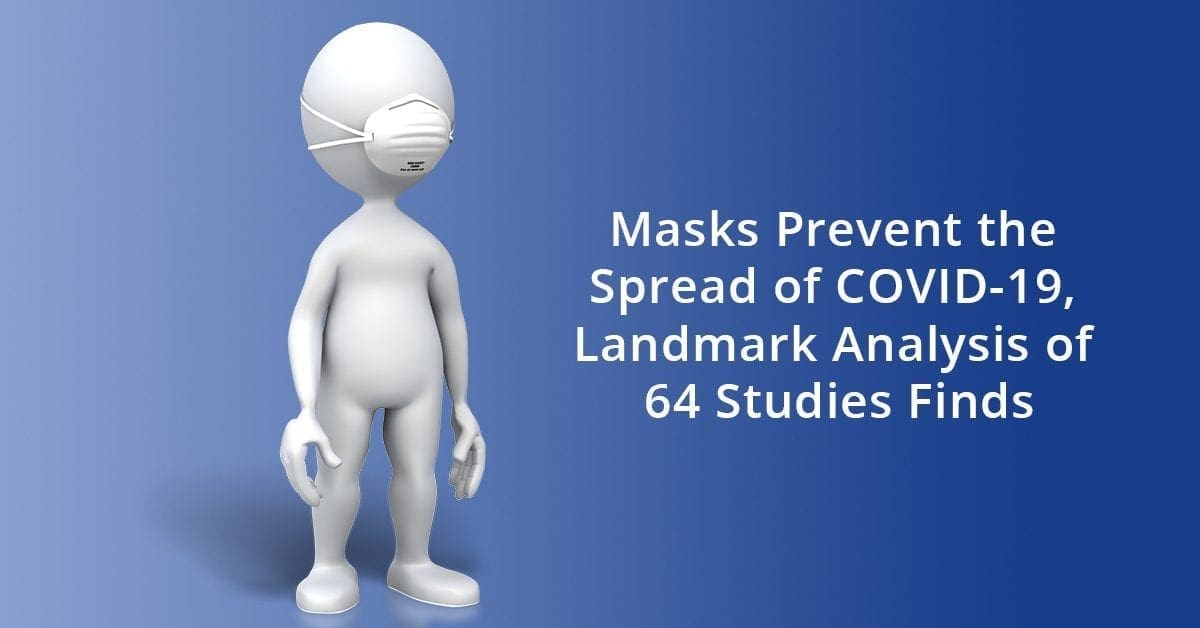Call us toll-free: 800-878-7828 — Monday - Friday — 8AM - 5PM EST

By Mark Wilson for Fast Company
As the U.S. healthcare system has been battling shortages of surgical masks, N95 respirators, and face shields, one lingering question has remained: Does all this PPE actually prevent someone from contracting COVID-19? Especially someone who is tasked with caring for COVID-19 patients day after day during long shifts in hospitals?
A new study out of Oregon Health & Science University (OHSU) funded by the World Health Organization has confirmed what much of the medical community has assumed. Yes, even stock surgical masks, which are not designed to filter particles from the air you breathe in, appear to make significant reductions in the numbers of doctors and nurses infected by coronaviruses in clinical settings. Meanwhile, N95 respirators, which are designed to filter pathogens, along with full protective gear including face shields and gloves, may help even more.
The paper, led by Roger Chou, director of the Pacific Northwest Evidence-based Practice Center at OHSU and a professor of medicine in the OHSU School of Medicine, was a meta-study that analyzed the results of 64 separate studies about the impact of PPE on virus transmission. They date back to 2003 with the rise of SARS, account for data on MERS (first reported in 2012), and even included a few early studies on SARS-Cov-2 (the virus that causes COVID-19).
“We were trying to take the evidence from viruses that we thought would be most like COVID-19,” Chou says, noting that all of the analyzed studies examined novel coronaviruses, which caused similar upper respiratory symptoms. The conclusion? “PPE definitely did seem to help,” he says. “In terms of the impact . . . in general, if you look at [individual healthcare workers] using masks versus no masks, the risk of being infected drops by anywhere from 50% to 80%.”
MASKS WORK IN HEALTHCARE SETTINGS
Masks consistently cut infection rates across the studies, leading Chou to believe that anything from a surgical mask to an N95 reduces the risk of transmitting coronaviruses. Which masks reduce COVID-19 infections most effectively? The meta-study does not provide a definitive answer, because there was little consistency in the types of masks researched and the exact circumstances they were researched in. “There are some studies that compare the N95 to surgical masks. And those studies do seem to indicate that an N95 might reduce risk more than a surgical mask,” he says. Similarly, Chou suggests that the more types of PPE you stack on top of yourself (like masks, gloves, face shields, and so on), the better. But the data is not as clear-cut as it is for wearing a mask versus not wearing a mask.
Another consistent conclusion Chou’s team discovered across studies was that offering healthcare workers training on how to wear PPE reduced risk of infection, too. “So this tells us it’s not just about giving people the gear but understanding how to use it properly,” he says. Surgical masks are not complicated to wear properly, Chou explains, but N95s do require brief training on how to get the perfect seal to your face. And with any mask, you’re not supposed to touch the front when putting it on or taking it off. “These are fairly simple mechanical [habits],” says Chou. “It’s not like it’s a lot of training, but making sure people understand the right techniques.”
The bigger problem with PPE training, he says, is often just whether or not healthcare workers know they should be wearing a mask in a certain situation at all. It’s why hospitals like OHSU currently have a policy to wear a mask at all times inside the building.
WHAT ABOUT THE GENERAL PUBLIC? SHOULD WE WEAR MASKS OUTSIDE?
So if masks are proven to prevent the spread of coronaviruses in hospital settings, shouldn’t the same be true for the public? Isn’t this proof, once and for all, that we need to be wearing masks in public?
Chou points out that the data for wearing PPE in public is even thinner than it is for wearing PPE inside hospitals, because there is less research on the topic and the styles and materials of masks people wear vary even more wildly than they do in healthcare. Still, he recommends that people wear masks outside. “I think common sense tells us having some kind of barrier is probably good,” he says. “It’s hard to know exactly how much it will reduce transmission. But overall it’s probably a good thing to do.”
And while the benefits of PPE in public are hard to quantify, Chou believes that his research is directly applicable inside of your own household, because the closed setting of your home is similar to that of a hospital. If someone you live with comes down with COVID-19, Chou says that wearing a mask should be a meaningful way to reduce the odds of transmission.
In other words, wear the mask. If you are a doctor, or a citizen, or caring for someone who is sick in your own home—just wear the mask.
